Seed Saving School
/Seed Savers Exchange was proud to present our first-ever multi-day Seed Saving School last weekend to 19 enthusiastic participants from across the country and around the world.
Our most comprehensive workshop available, the Seed Saving School combined early-morning classroom lectures with hours of hands-on activities out in the field.
Students had the rare opportunity to experience seed saving from start to finish: garden planning, plant isolation, hand-pollination, seed harvesting, seed cleaning, storage and seed sharing.
Friday morning began with introductions, and though our class was quite diverse (gardeners/entrepreneurs/teachers from the UK, California, Alberta, Iowa, Michigan…), everyone was united in their excitement for heirloom produce, biodiversity, sustainability and self-sufficiency. After a quick orientation to Heritage Farm and the various ways that we protect and promote our garden heritage, students headed to the gardens to begin harvesting heirloom tomatoes and squeezing out their seeds.
Saturday focused almost entirely on flowers. Collection Curator Jenna Sicuranza taught pollination, reproduction and lifecycles for common garden crops, then the class packed up for a field trip to The Pepperfield Project, where founder David Cavagnaro discussed seed saving on a home scale and overwintering biennials. In the afternoon, back at Heritage Farm, students learned hand-pollination and isolation techniques to keep seeds pure for outbreeding crops like corn, squash, cucumbers and mustards.
Sunday’s activities related primarily to harvesting and cleaning seeds of various garden plants. We began with an illustration of market maturity vs. seed maturity, then proceeded to harvest beans, peppers, eggplant, squash and cucumbers with the intent to process them later in the day. After everyone built their own screens for seed cleaning, we spent the afternoon splitting squash, macerating peppers and eggplant, threshing and winnowing beans, and rinsing the tomato seeds we’d squeezed and left to ferment at the beginning of the course.


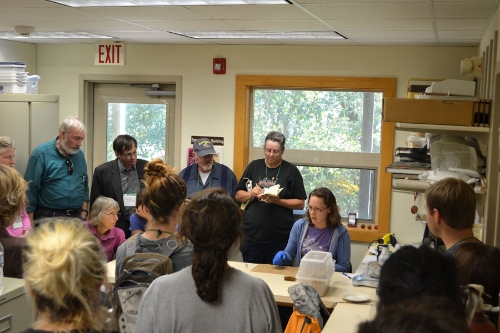
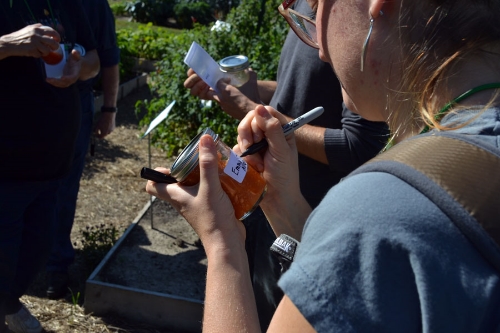
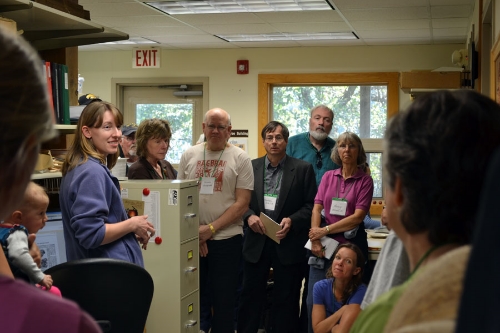
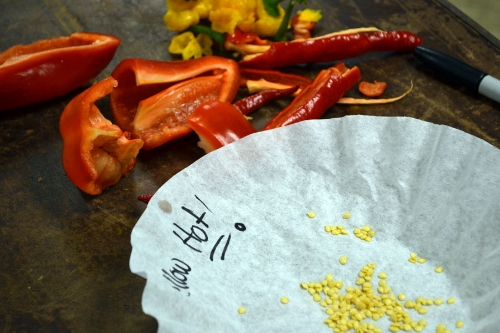
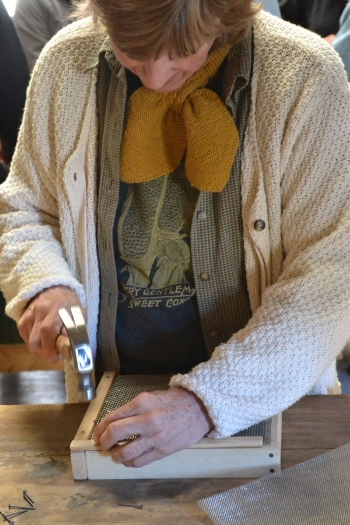
By the end of the weekend, each student had a small collection of vegetable, flower and herb seeds to take home for planting next year. As we said ‘farewell’, I encouraged students to share their new seeds and new skills with friends and neighbors, or with fellow gardener/seed savers through our Seed Exchange.
These knowledgeable and enthusiastic participants give us an overwhelming sense of optimism about the future of our garden heritage. Folks like these—who continue to seek out experiences that allow them to preserve rare heirloom and open-pollinated varieties in their own backyards and pursue opportunities to connect with other seed savers—are vital to our mission.
Congratulations to all of our Seed Saving School graduates!
Because of your success, we look forward to making our Seed Saving School a permanent fixture in the educational offerings at Heritage Farm.
For other gardeners interested in attending next year’s Seed Saving School, look for more details early in 2014.
Located in Decorah, Iowa,Seed Savers Exchange is a non-profit organization dedicated to conserving and promoting America’s culturally diverse but endangered garden and food crop heritage for future generations by collecting, growing, and sharing heirloom seeds and plants.















